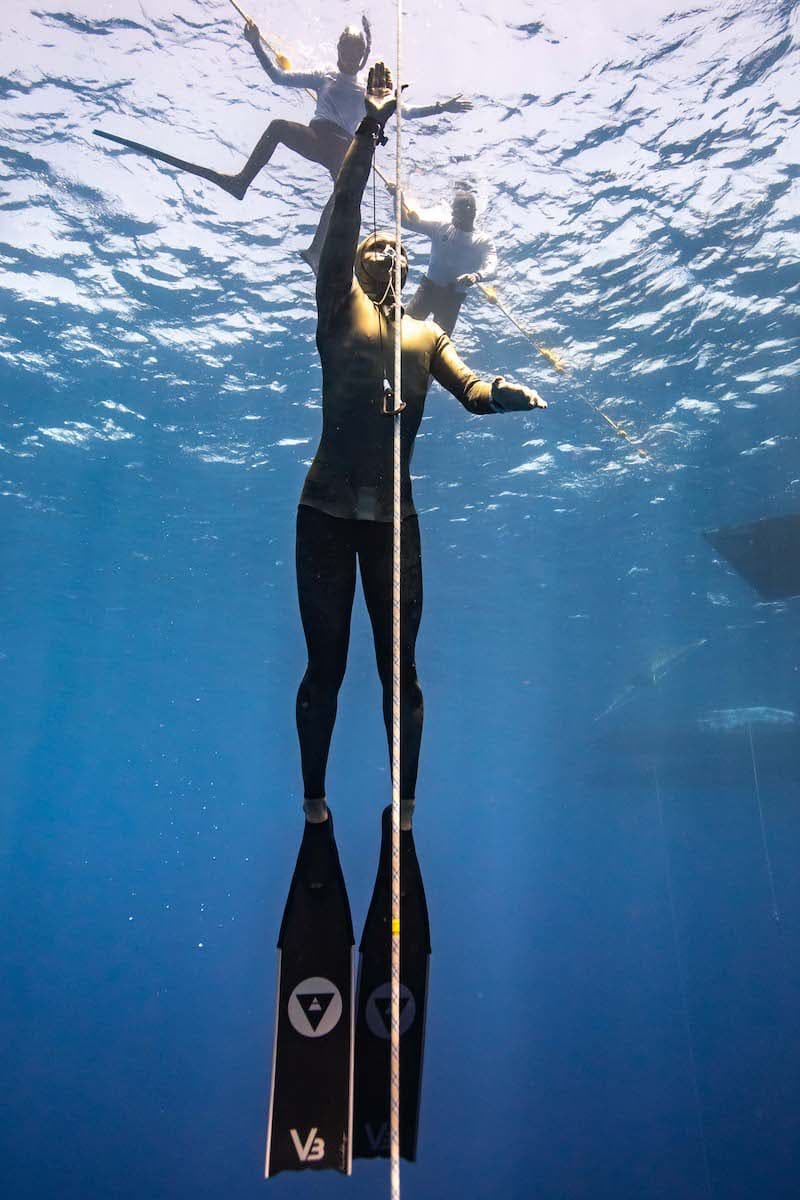
 Roni Essex
Freediver, Spearo, Creator
Roni Essex
Freediver, Spearo, Creator

 Roni Essex
Freediver, Spearo, Creator
Roni Essex
Freediver, Spearo, Creator
Freediving fins come in various materials, including carbon fiber and fiberglass. While fiberglass fins are commonly used and can be found at an affordable price, carbon fiber fins are often the preferred choice of experienced freedivers. In this article, we'll explore the advantages of carbon fiber freediving fins over their fiberglass counterparts.
Carbon fiber freediving fins are known for their stiffness and responsiveness. This is due to the material's high modulus of elasticity, which means it is resistant to bending and can quickly return to its original shape. When you kick with carbon fiber fins, the energy you put into each stroke is transmitted directly to the water, resulting in powerful propulsion. In comparison, fiberglass fins tend to be more flexible, making them feel sluggish and require more effort to move through the water.

Carbon fiber is a highly durable material, and carbon fiber fins are built to last. They can withstand heavy use and still maintain their shape and performance. In contrast, fiberglass fins can be prone to wear and tear, especially with extended use. With carbon fiber fins, you can expect to get a lot of use out of them before needing to replace them.
Another advantage of carbon fiber fins is their weight. Carbon fiber is a lightweight material, and the fins are designed to be as light as possible without sacrificing durability or stiffness. This means that you can move through the water more efficiently and with less fatigue. In comparison, fiberglass fins tend to be heavier, which can be a disadvantage for divers who want to conserve energy and move through the water with minimal effort.

Carbon fiber fins are highly customizable, and you can tailor them to your specific needs and preferences. This level of customization allows you to create a fin that is ideally suited to your diving style and goals. In comparison, fiberglass fins tend to be more standardized, with fewer options for customization.
Due to their stiffness and lightness, carbon fiber fins are known for their speed. They allow you to move quickly through the water with minimal effort, making them an excellent choice for competitive freediving. In contrast, fiberglass fins tend to be slower and require more effort to achieve the same level of speed.

Carbon fiber fins are designed with hydrodynamics in mind, meaning that they are shaped to minimize drag and maximize propulsion. The blades are usually thinner and stiffer, which allows for a more efficient transfer of energy from the diver's legs to the water. This results in a smoother, more streamlined kick and improved overall performance. Fiberglass fins, on the other hand, are often thicker and more rounded, which can create more drag and reduce the diver's speed and efficiency.
One potential disadvantage of carbon fiber fins is their price. They tend to be more expensive than fiberglass fins, which can be a barrier for some divers who are on a budget. However, it's important to remember that carbon fiber fins are an investment, and their durability and performance make them a worthwhile investment for serious freedivers.

While fiberglass fins are a viable option for beginner freedivers or those on a budget, carbon fiber fins offer a range of advantages that make them the preferred choice of experienced freedivers. From their stiffness and responsiveness to their durability and customizability, carbon fiber fins are designed to provide optimal performance and efficiency in the water. While they may come at a higher cost, the benefits they offer are well worth the investment for serious freedivers who want to take their diving to the next level.